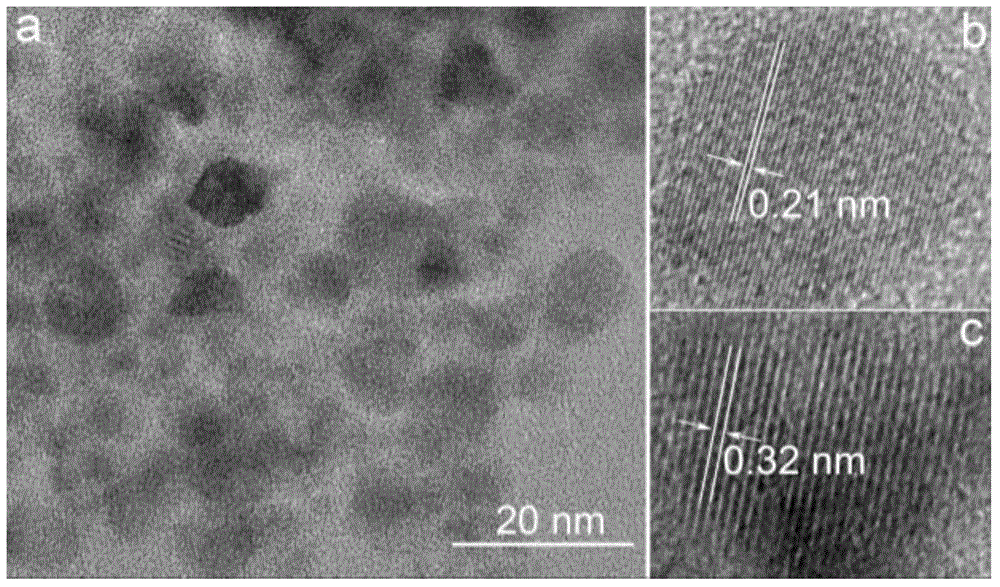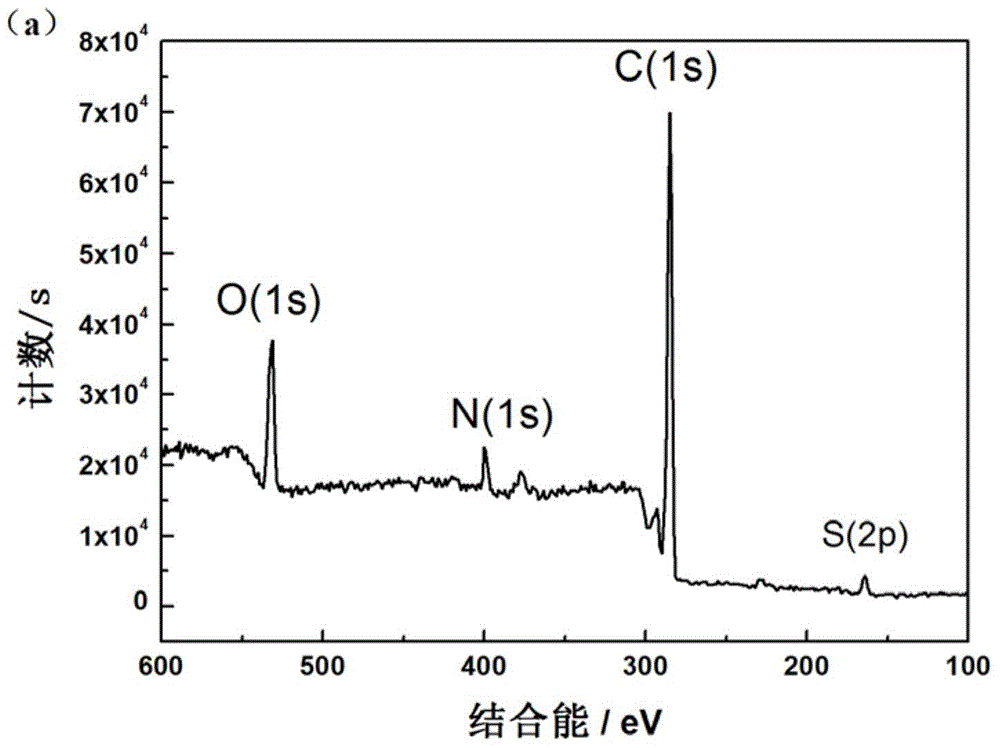Carbon dot with continuous golgi apparatus target imaging capability and preparation method thereof
A technology of targeted imaging and Golgi apparatus, applied in chemical instruments and methods, fluorescence/phosphorescence, nanotechnology, etc., can solve the problems of inaccurate positioning, distribution and dispersion of organelles, achieve high blue fluorescence intensity, avoid modification steps, Good photobleaching resistance and biocompatibility
- Summary
- Abstract
- Description
- Claims
- Application Information
AI Technical Summary
Problems solved by technology
Method used
Image
Examples
preparation example Construction
[0038] The preparation method of carbon point of the present invention comprises the steps:
[0039] 1), citric acid pyrolysis: according to the mass ratio of citric acid and L-cysteine is the ratio of 1:0.25~1, take citric acid and add round bottom flask, heat at 150~250 ℃ for 0~20min;
[0040] 2), pyrolysis of the mixture: after step 1) is completed, continue to add a proportional amount of L-cysteine to the round bottom flask, and continue heating at 140-250° C. for 3-60 minutes to obtain a solid product;
[0041] 3), acid-base neutralization: add sodium hydroxide or potassium hydroxide solution to the solid product obtained in step 2), until the pH of the whole solution is 6-8;
[0042] 4), purification: filter the neutral solution obtained in step 3) with a filter membrane of 0.22 μm, then dialyze with a dialysis bag with a molecular weight cut-off of 500-1000 Da for 12-48 hours, freeze-dry after dialysis to obtain carbon dots.
Embodiment 1
[0043] The preparation of embodiment 1 carbon point
[0044] The preparation method of carbon dots is as follows:
[0045] 1), citric acid pyrolysis: 2g of citric acid was added in a 100mL round bottom flask, and reacted for 20min at 200°C in an oil bath;
[0046] 2), pyrolysis of the mixture: step 1) After the reaction is completed, add 2g of L-cysteine, and react at 150°C for 50min;
[0047] 3), acid-base neutralization: the reaction product obtained in step 2) is adjusted to pH 6-8 with potassium hydroxide solution;
[0048] 4) Filter the neutralized solution with a 0.22 μm filter head and then put it into a dialysis bag with a molecular weight cut-off of 500-1000 Da for dialysis for 24 hours. After dialysis, freeze-dry to obtain carbon dots.
Embodiment 2
[0049] The preparation of embodiment 2 carbon dots
[0050] The preparation method of carbon dots is as follows:
[0051] 1), citric acid pyrolysis: 2g of citric acid was added in a 100mL round bottom flask, and reacted at 220°C for 20min in an oil bath;
[0052] 2), pyrolysis of the mixture: step 1) after the reaction is completed, add 0.5g L-cysteine, and react at 200°C for 10min;
[0053] 3), acid-base neutralization: the reaction product obtained in step 2) is adjusted to pH 6-8 with sodium hydroxide solution;
[0054] 4) Filter the neutralized solution with a 0.22 μm filter head and then put it into a dialysis bag with a molecular weight cut-off of 500-1000 Da for dialysis for 24 hours. After dialysis, freeze-dry to obtain carbon dots.
PUM
 Login to View More
Login to View More Abstract
Description
Claims
Application Information
 Login to View More
Login to View More - R&D
- Intellectual Property
- Life Sciences
- Materials
- Tech Scout
- Unparalleled Data Quality
- Higher Quality Content
- 60% Fewer Hallucinations
Browse by: Latest US Patents, China's latest patents, Technical Efficacy Thesaurus, Application Domain, Technology Topic, Popular Technical Reports.
© 2025 PatSnap. All rights reserved.Legal|Privacy policy|Modern Slavery Act Transparency Statement|Sitemap|About US| Contact US: help@patsnap.com



